You can use the assumed shape array A(1:, 1:) in your function Alnorm as follows:
program hw2
implicit none
interface
real*8 function Alnorm(A)
implicit none
real*8 A(1:, 1:), cur
integer i, j, M, N
end function Alnorm
end interface
real*8 Arr(3, 4), ans
integer i, j
read*, ((Arr(i,j), j=1,size(Arr,2)), i=1,size(Arr,1))
ans = Alnorm(Arr)
write(*, *) ans
pause
end program hw2
real*8 function Alnorm(A)
implicit none
real*8 A(1:, 1:), cur
integer i, j, M, N
Alnorm = 0.0
M = size(A, 1)
N = size(A, 2)
do i = 1, N
cur = 0.0
do j = 1, M
cur = cur + A(j,i)
enddo
if(Alnorm < cur) then
Alnorm = cur
endif
enddo
end function Alnorm
Please try to use explicit variable declaration by defining implicit none.
It helps to avoid confusion especially for larger Fortran projects.
The size function works well to get the rank for the matrix A.
Don't forget to define the interface block in your program for function
Alnorm.
Considering the comments below your question and using constants M and N
for the matrix, your program might look like:
program hw2
implicit none
integer, parameter :: M = 3, N = 4
real(kind=8) :: Arr(M, N), ans, Alnorm
integer :: i, j
read*, ((Arr(i,j), j=1,N), i=1,M)
ans = Alnorm(Arr, M, N)
write(*, *) ans
pause
end program hw2
real(kind=8) function Alnorm(A, M, N)
implicit none
integer, intent(in) :: M, N
real(kind=8), intent(in):: A(M, N)
real(kind=8) ::cur
integer :: i, j
Alnorm = 0.0
do i = 1, N
cur = 0.0
do j = 1, M
cur = cur + A(j,i)
enddo
if(Alnorm < cur) then
Alnorm = cur
endif
enddo
end function Alnorm
Tested with Intel Visual Fortran Compiler 19.1.0055.16, both programs write
back the maximal sum of a column defined in a M x N matrix.
